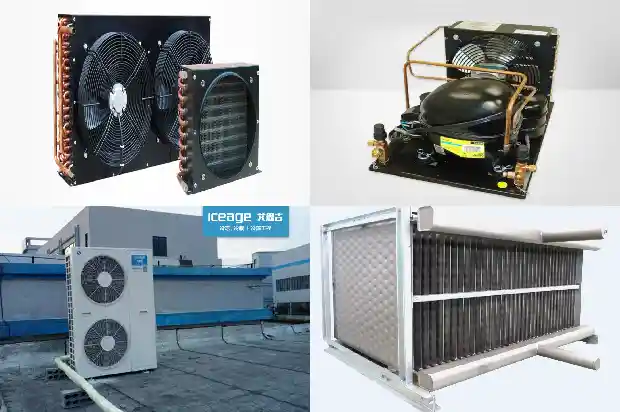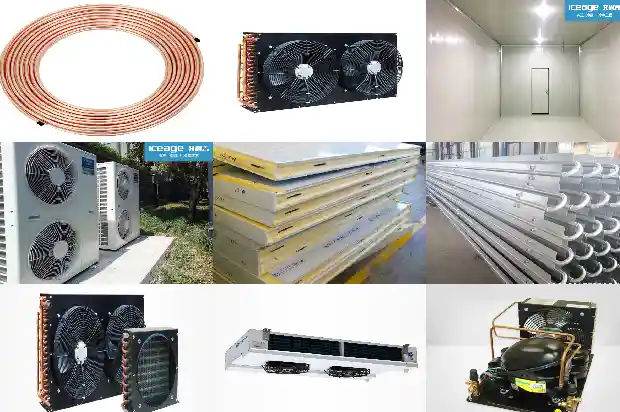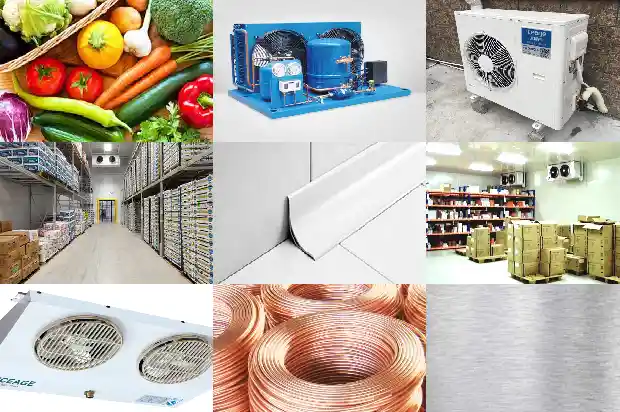On the maintenance and inspection of external insulation layers of pipes in refrigeration devices
2024-09-21
In refrigeration devices, the insulation layers of some containers and pipelines may age, fail, or become damaged after long-term use. During equipment inspections, attention should be paid to checking the state of the insulation layer. If any of the following conditions is found, repairs must be carried out:
- The heat dissipation loss on the outer surface of the insulation of equipment and pipelines exceeds 1.2 times the specified value.
- The local temperature on the outer surface of the insulation of equipment, pipelines, and their accessories exceeds the design temperature by 30°C.
- The protective layer is damaged or there are phenomena of rain leakage and water seepage.
- The surface coating or paint film of the metal protective layer is obviously peeled off.
- Frosting or condensation appears on the surface of the cold insulation layer of equipment and pipelines.
- Components such as supports and hangers in the insulation system are damaged or severely misaligned.
Preparations before repairing the insulation layer: - Consult technical documents such as drawing materials of the inspected equipment.
- Check the quality and technical parameters of new materials, such as non-flammability and self-extinguishing property, moisture content, moisture absorption rate, thermal expansion coefficient, shrinkage rate, flexural strength, environmental protection and safety performance, corrosiveness and corrosion resistance, etc., to see if they meet the requirements of technical documents, and have product factory certificates.
- The replacement construction of the insulation layer shall be carried out after processes such as pressure testing, descaling, rust removal, painting, and fixing are qualified.
- Do personal safety protection work according to the construction environment and comply with relevant national regulations.
Construction requirements and quality standards: - Equipment and pipelines can be insulated during both hot and cold states. However, cold insulation should be constructed before injecting cold media. And materials of the same original material should be selected.
- For thickness measurement points that need to be regularly detected, a distance of 150mm should be left on both sides from the center line of the thickness measurement point. At the connection between flanges, valves and other pipe fittings and pipelines, there should be a disassembly gap. The reserved size is the bolt length plus 25mm.
- The insulation of reserved parts such as welds and valves should adopt another insulation structure. It is advisable that the insulation structure on both sides is not damaged when disassembled. When metal external protection is used at welds, the longitudinal seams should be connected by box-type buckles, and the spacing should not exceed 200mm. Valves should preferably adopt a detachable box structure.
- Strengthen the management of insulation materials to prevent water immersion and rain. Outdoor construction is not allowed on rainy days. If slightly wet, it must be dried in the sun. Otherwise, the protective layer is not allowed. Severely wet and soaked materials should be treated as waste.
- When the thickness of the rigid insulation layer exceeds 100mm, the thickness of the soft insulation layer exceeds 80mm, and the thickness of the cold insulation layer exceeds 80mm, a double-layer or multi-layer insulation structure should be adopted.
- For insulation of vertical equipment or vertical pipelines, support rings should be provided. The width should be less than 10mm of the insulation layer thickness. The supports and hangers of pipelines should be insulated, and the bracket size should be larger than the insulation thickness. When using rigid insulation materials, bulk fiber materials should be filled at the supports and hangers.

- When pins or hook nails are used for equipment insulation, the spacing should not be greater than 350mm. The number of pins or hook nails per square meter is: there should be no less than 6 on the side and no less than 8 on the bottom. In the cold insulation structure, pins or hook nails must not penetrate the cold insulation layer.
- Accessories on cold insulation equipment and pipelines must be cold insulated.
The length of the cold insulation layer must not be less than 4 times the thickness of the cold insulation layer or laid to the wooden pad.
Repair and replacement of metal protective layer (also called metal external protection): - The circumferential joint of the metal sheath of horizontal pipelines should follow the slope of the pipeline, and the circumferential interface should be at a lower place. The longitudinal joint should be arranged 150-450mm below the horizontal center line, with the joint opening facing down. When there are obstacles on the side or bottom, the longitudinal joint can be moved to within 600mm above the horizontal center line of the pipeline. For straight pipe sections, the longitudinal joints of each section should generally be connected in a straight line.
- The circumferential seam of the pipeline metal protective layer should be overlapped in a bulging way, and the overlap size shall not be less than 50mm. Except for the longitudinal seam where a moisture-proof layer structure is provided and screws are not allowed for fixation, it should be based on good sealing and regular and beautiful appearance. According to specific conditions, the fixing structure is determined by oneself.
- The connection of the metal protective layer on vertical equipment and vertical pipelines should be fixed on supports in sections. For the protection layer connection in the same section, fixed structure and plug-in structure should be alternately used.
When fixed with screws, there should be no less than 2 fixing screws on each piece of protective skin.
- The metal protective layer on the equipment head and pipe elbow should be cut into pieces according to the shape and size and adopt a seaming structure.
Related Articles
- Basic Faults and Preventive Maintenance of Water - cooled Units
- Essential for Maintenance! Parameters and Phenomena of Normal Operation of Refrigeration and Heating Systems
- Welding Equipment Used in Refrigeration System Maintenance
- Maintenance Methods for Small Modular Cold Storage Failures
- Maintenance Techniques for Air - conditioning Refrigeration Systems
- Maintenance Strategies for the Working Cycle and Electrical Automatic Control of Chillers
- Essential Basics for Maintenance, Debugging of Refrigeration and Air - conditioning Systems
- 8 Maintenance Procedures for Industrial Chillers
- Requirements and Maintenance for Building Meat Food Cold Storage
- Maintenance Methods for Faults in Screw Refrigeration Air - conditioner Compressors
- Maintenance Methods for Refrigerant Leak in Air - conditioner Outdoor Unit
- Knowledge, Installation and Maintenance of Cold Storage Systems
- Are you familiar with the detection and maintenance methods of air conditioner components?
- Maintenance and Operation of Freezing and Cold Storage Warehouses
- Water-cooled Screw Chiller: Operation and Maintenance
- Daily Maintenance Training for Users after Installation of Small and Medium-Sized Cold Storages
- Maintenance of Screw Chiller
- Maintenance of Screw Chiller
